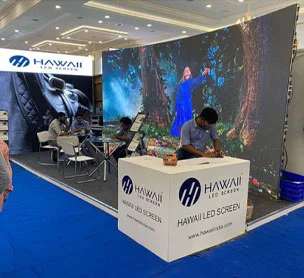Blog Details
Brightness of An LED Display Screen

- Posted On 27 Jun 2022
#leddisplay screenpriceinhyderabad, #ledscreenpriceintelangana, #ledscreendisplayinbangalore
Brightness of an LED display
The benefits of a brighter LED screen are always greater.
However, is it always necessary for you to make significant investments in LED screen with bright screens?
We will go over all the information you require about screen brightness in this chapter.
dimness of the LED screen
Nits are used to assess LED screen brightness. A candela per square metre (cd/m2) is equal to one nit.
The LED screen is brighter the higher the nits.
The average TV screen brightness is 200 nits. While outdoor LED screens can have a brightness of up to 9,000 nits, inside LED screens range in brightness from 400 to 3,000 nits.
What can we infer from the contrast between a TV and an LED screen in terms of screen brightness?
TVs are not intended for use in businesses. Only for a comfortable viewing environment in a room is a TV screen bright enough. Compared to a store or an outside location, an inside room is typically darker.
What if a company displays a TV in the storefront window?
In a retail setting, ambient light refers to all of the available artificial and natural illumination. The TV LED screen will appear darker when the surrounding light is brighter than it is. It will be challenging to read the TV screen.
Therefore, for improved LED screen visibility, we always advise businesses to use LED screens or digital signage with higher LED screen brightness.
We also need to take a close look at another crucial factor, the contrast ratio, in order to learn more about the LED screen visibility.
The brightness level of an image's darkest black and its brightest white is measured as the contrast ratio. The contrast ratio increases as the brightness difference grows.
The brightness of a full white image is 2,000 times greater than the brightness of a full black image, according to a contrast ratio of 2000:1.
A picture with a high contrast ratio offers more vivid colours and greater image quality. It features lighter highlights and darker shadows.
An image with a low contrast ratio may appear uncolored or greyish, but it will appear brighter, especially in conditions with high ambient light.
For the best viewing experience, higher contrast ratios are typically desired. There is no need to sacrifice the image quality by reducing the contrast ratio because the LED screen brightness of an LED display is sufficient to cover the majority of applications.
Is a brighter LED screen always preferable?
We must comprehend a reality before we can respond to the question of whether a brighter LED screen is always better. If the LED screen brightness is higher, the price is more.
The ideal brightness level does not exist. Finding the best brightness levels for various purposes is what we need to do.
For instance, a high LED screen brightness is crucial if you plan to build a digital billboard next to a busy highway. Direct sunlight will result in the LED screen seeming darker. When the LED screen is not bright enough, the audience will struggle to read it.
But what if you want to put up an interior LED screen?
We advise you to carefully survey your surroundings. Increasing LED screen brightness is essential if there is ambient light that could reflect or create glares on your monitor.
In the end, you want to help your audience. The consumer experience can be improved with high LED screen visibility.
High LED screen brightness, however, is only a problem when the LED screen is too bright and makes your audience uncomfortable.
